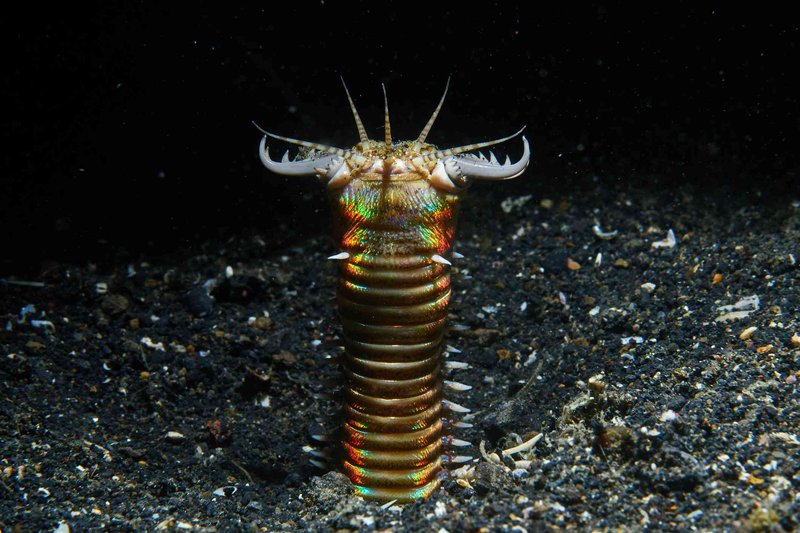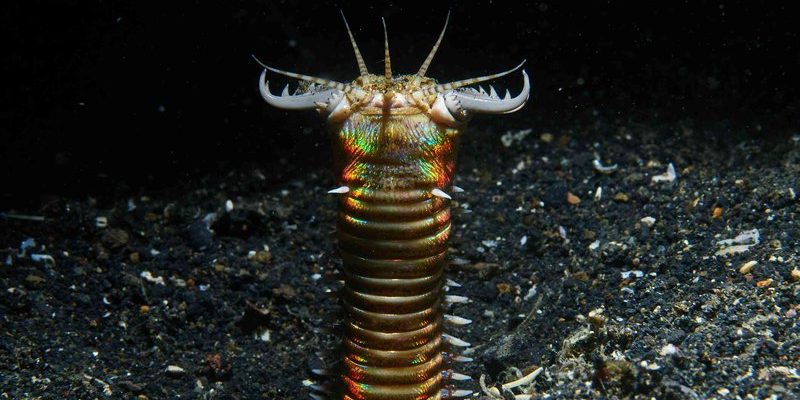
Quarantining live rock isn’t just a precaution—it’s a necessity if you want to keep your tank healthy and thriving. Think of it as an insurance policy for your aquarium. Taking the time to properly quarantine your rock can save you headaches down the line. In this article, we’ll dive into the step-by-step process of how to quarantine your live rock so you can enjoy your aquarium without fear of Bobbit worms and other pests. Let’s get started!
What Is a Bobbit Worm?
Before we dive into the quarantine process, it’s important to understand what a Bobbit worm is and why it’s such a concern. Bobbit worms, or *Eunice aphroditois*, are large, predatory marine worms that can grow several feet long. They typically hide in the sand or rock crevices, extending their long bodies to snag unwary fish and small invertebrates. Let me tell you, these worms can be quite a shocker for new aquarium owners.
You might be wondering, how do these worms end up in your live rock? Well, they can hitch a ride on new rock that hasn’t been properly quarantined. That’s why being vigilant is key. If you’ve ever looked at a piece of live rock and thought, “Wow, that looks pretty,” remember that beauty can sometimes hide danger. So, learning to quarantine your live rock is essential for keeping your aquatic friends safe.
Why Quarantine Live Rock?
There are a few good reasons to quarantine your live rock, and avoiding Bobbit worms is just one of them. Here’s the thing: live rock can harbor more than just worms. It can also carry pests like mantis shrimp, aiptasia, or even harmful bacteria. By quarantining the rock, you give yourself a chance to inspect and treat any unwanted guests before they enter your aquarium.
Quarantining also helps your live rock establish beneficial microfauna without competing with other organisms in your main tank. New environments can be stressful, and this downtime allows your live rock to settle in without the hustle and bustle of fish swimming around. You wouldn’t want to throw a puppy into a room full of hyper kids—it’s the same idea!
How To Set Up a Quarantine Tank
Setting up a quarantine tank is quite straightforward, but it requires attention to detail. Here’s what you’ll need:
- A tank: A small tank (around 10-20 gallons) is perfect for quarantining live rock.
- Water: Use saltwater that matches your main tank’s salinity to reduce stress on the live rock.
- Filtration: An air stone or simple sponge filter will help keep the water oxygenated.
- Light: A basic aquarium light can help maintain healthy algae growth on the rock.
Once you have everything set up, fill the tank with saltwater and let it run for a day or two. This allows the water to stabilize and gives you a chance to test the salinity and temperature. Remember to keep it similar to your main tank’s parameters. Consistency is key!
Placing Live Rock in Quarantine
Now that your quarantine tank is ready, it’s time to introduce your live rock. Gently place the rock in the tank, making sure it’s submerged completely. Avoid dropping it from a height, as this can damage the organisms living on it.
Once the rock is in, give it some time to acclimate. Keep an eye on water parameters over the next week. Test for ammonia, nitrite, and nitrate levels. If you notice any spikes, it might indicate that you have some unwanted hitchhikers. In that case, you might need to take action to clean or treat the rock.
Inspecting for Pests
During the quarantine period, it’s crucial to thoroughly inspect your live rock for any signs of pests. Here are some tips on what to look for:
- Visual Inspections: Check for visible creatures like Bobbit worms, bristle worms, or mantis shrimp. Look closely at the crevices and edges.
- Behavioral Signs: If you see tiny animals scurrying when the rock is disturbed, that’s a red flag. These could be pests that you don’t want in your tank.
- Smell: If your rock emits a foul odor, it may indicate decay or the presence of harmful bacteria that needs to be addressed.
You might be wondering how long to keep the rock in quarantine. Generally, a safe rule is to quarantine for about 4–6 weeks. This gives enough time to make sure no unwanted guests are present and allows any potential outbreaks to surface.
Treating Live Rock
If you do find undesired creatures on your live rock, don’t panic! There are several ways to deal with them. Depending on what you find, you might consider:
- Manual Removal: For smaller pests, you can often remove them by hand. Just use a pair of tweezers and be gentle.
- Dip Solutions: If you find a lot of unwanted critters, consider using a dip solution specifically made for marine life. Just follow the instructions carefully.
- Temperature Shocks: Some pests can be sensitive to temperature. Gradually changing the water temperature might encourage them to leave the rock.
Remember to rinse the rock well after treatment, using saltwater from the quarantine tank. You want to ensure that you don’t introduce any harmful substances into your main tank.
Final Steps Before Introducing to Your Main Tank
After the quarantine period, and once you’ve ensured that your live rock is pest-free, it’s time for the last few preparations before introducing it to your main tank. First, do another water quality check to confirm everything is stable. Then, ensure that the rock is clean and free of any leftover dip solution or contaminants.
If you’re feeling nervous about putting the live rock directly into your main tank, consider adding it to a temporary holding area in the tank for a couple of days. This way, you can observe it further and make sure everything looks good.
Once you’re confident, you can place that beautiful, pest-free live rock in your main aquarium and enjoy the benefits without worrying about creepy crawlers ruining your underwater paradise!
Quarantining your live rock is a simple yet crucial step to keeping your aquarium healthy and thriving. By taking the time to properly check and treat your rock, you not only avoid potential Bobbit worm infestations but also foster a more balanced ecosystem. It may take a little extra effort, but the peace of mind is worth it.
So, grab that live rock and set up your quarantine tank! Your future fish will thank you for it, and you’ll get to enjoy a beautiful, healthy aquarium without the worry of pesky intruders. Happy fishkeeping!

